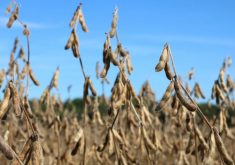Argentine farmers continue to offload soy stockpiles following a series of carrot-and-stick measures aimed at spurring exports.
Between Sept. 8 and 14, producers sold 2.3 million tonnes of the 2021-22 harvest, up from 2.1 million tonnes the prior week, per official data. By the end of that week, 61.8 per cent of the 2021-22 harvest was sold.
Sales volume was just 268,100 tonnes in the last week of August, but sales surged after Sept. 5, when the government launched a more preferable exchange rate for soybean producers, many of whom had been holding off from selling their stock amid inflation and economic instability.
Read Also

Journal pulls long-cited glyphosate study for ethics violations
The journal Regulatory Toxicology and Pharmacology has retracted a 2000 Monsanto-linked glyphosate review, drawing new scrutiny as Bayer faces mounting legal pressure.
Argentina’s central bank recently tightened access to foreign currency for producers selling with the special exchange rate, a move likely to lower sale volumes in coming days, said Gustavo Idigoras, president of the country’s CIARA-CEC chamber of oilseed crushers and export companies.
Argentina is the world’s leading exporter of oil and meal derived from soybeans and an important producer of corn, wheat and barley.
The agriculture ministry said 66.3 per cent of Argentina’s 59 million tonnes of corn harvested during the 2021-22 season has been sold, an increase from the 61.7 per cent sold by the same time last year.
The coming 2022-23 cycle for Argentina’s corn and soy crops is expected to begin between September and October, when the National Meteorological Service forecasts less rainfall than normal as a result of the La Nina weather phenomenon.
Argentina’s critical wheat harvest begins in November. Producers had, as of the middle of September, sold 5.3 million tonnes, 29.8 per cent of the 17.7 million tonnes that the Rosario Grains Exchange forecasts for the 2022-23 harvest.
The grains exchange expects sales abroad to fall to 12 million tonnes from 15 million tonnes.















